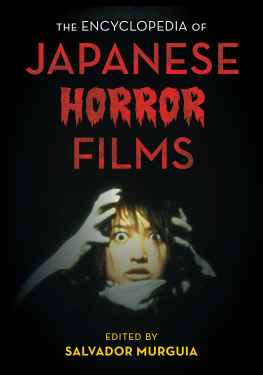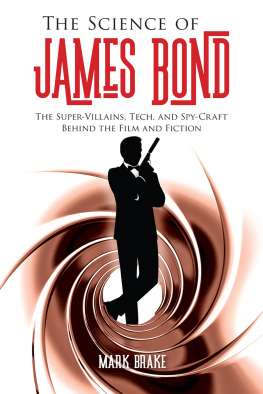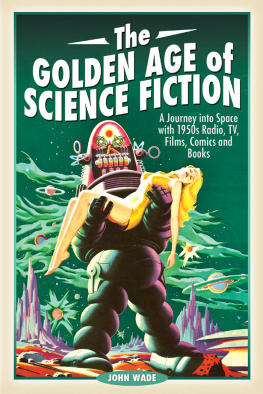
ESCAPE VELOCITY
ESCAPE VELOCITY

American Science Fiction Film, 19501982
Bradley Schauer
WESLEYAN UNIVERSITY PRESS / MIDDLETOWN, CONNECTICUT
Wesleyan University Press
Middletown CT 06459
www.wesleyan.edu/wespress
2017 Bradley Schauer
All rights reserved
Manufactured in the United States of America
Designed by Eric M. Brooks
Typeset in Skolar by Passumpsic Publishing
Library of Congress Cataloging-in-Publication Data
NAMES: Schauer, Bradley.
TITLE: Escape velocity: American science fiction film, 19501982 / Bradley Schauer.
DESCRIPTION: Middletown, Connecticut: Wesleyan University Press, [2016] | Series: Wesleyan film | Includes bibliographical references and index.
IDENTIFIERS: LCCN 2016005817 (print) | LCCN 2016008370 (ebook) | ISBN 9780819576583 (cloth: alk. paper) | ISBN 9780819576590 (pbk.: alk. paper) | ISBN 9780819576606 (ebook)
SUBJECTS: LCSH: Science fiction filmsUnited StatesHistory and criticism.
CLASSIFICATION: LCC PN1995.9.S26 S25 2016 (print) | LCC PN1995.9.S26 (ebook) | DDC 791.43/615dc23
LC record available at http://lccn.loc.gov/2016005817
5 4 3 2 1
Cover photo: Destination Moon still. Wisconsin Center for Film and Theater Research.
For my parents
Contents

Acknowledgments

I have been very fortunate over the last ten years to receive a great deal of assistance from a great many people, without whom this book could never have been published. To begin, I would not know the first thing about teaching or writing film history without the examples set by a number of extraordinary scholars at the University of Wisconsin-Madison. Id like to acknowledge Lea Jacobs, Vance Kepley, Ben Singer, Chris Livanos, and particularly Jeff Smith for their comments on early versions of this manuscript. Im also grateful for the guidance of Tino Balio, Kelley Conway, Michael Curtin, Julie DAcci, and Kristin Thompson. Special thanks to J. J. Murphy for encouraging me to apply to grad school, and to David Bordwell, whose mentorship and friendship have had a profound impact on my life.
Thank you to my friends in graduate school (and beyond) for their camaraderie and feedback on my work, especially Masha Belodubrovskaya, Colin Burnett, Casey Coleman, Kaitlin Fyfe, Heather Heckman, Derek Johnson, Pearl Latteier, Charlie Michael, Caryn Murphy, Katherine Spring, Billy Vermillion, and Tom Yoshikami. Thanks in particular to Anne Stancil for her crucial support during the early stages of this project, to Dave Resha for recommending Wesleyan University Press and for his guidance with the publication process, to Jake Smith for his critical perspective and enthusiasm for science fiction films, and to Mark Minett for the innumerable insights and recommendations he shared over the long gestation of this book.
I would also like to thank my Film & Television colleagues at the University of Arizona: Jacob Bricca, Bruce Brockman, Sergio Caez, Josh Gleich, Yuri Makino, Michael Mulcahy, Shane Riches, Beverly Seckinger, Lisanne Skyler, Erica Stein, and Cody Young. Special thanks to Mary Beth Haralovich and Barbara Selznick for their ardent support and mentorship. Im also grateful to my students at the U of A for their many valuable comments in class, and for tolerating my sometimes-obsessive focus on this genre and time period.
A number of generous people made my archival research as simple and productive as possible. Thank you to Barbara Hall and the staff at the Margaret Herrick Library at the Academy of Motion Picture Arts and Sciences, the staff of the UCLA Film and Television Archive, Sandra Joy Lee Aguilar and the staff at the Warner Bros. Archive at usc, Ned Comstock at the usc Cinematic Arts Library, and Maxine Fleckner Ducey, Amy Sloper, and the staff at the Wisconsin Center for Film and Theater Research.
contains material from a previously published essay of mine: The Greatest Exploitation Special Ever: Destination Moon and Postwar Independent Distribution, in Film History 27, no. 1 (2015). Thank you to editor Gregory A. Waller and the anonymous reviewer of that essay.
Working with Wesleyan University Press has been invigorating. My editor Parker Smathers has been both helpful and encouraging throughout the process. Additional thanks go to Glenn Novak for his skilled copyediting. I am also grateful to Lisa Dombrowski and Scott Higgins for expressing an interest in this project, and to the two anonymous reviewers for their very useful recommendations.
I was lucky enough to meet Erin Treat while working on this book. Her kindness, patience, and respect for my work have been so important during this time. I look forward to watching some of these movies with her (especially Zardoz). Finally, Id like to thank my family. My regular phone conversations with my brother Matt about academia (and more importantly, the Milwaukee Bucks) have been fun and therapeutic. He and my sister-in-law Shelley have always been supportive of me, and generous hosts when I visit them. This book is dedicated to my parents, Jeff and Gail, who have stood by me from the very beginning, even when film studies seemed like something of a questionable career choice. They have always believed in me without hesitation. Any success I may have achieved, personally and professionally, is due to their love and example.
ESCAPE VELOCITY
Introduction

SF AND THE AMERICAN FILM INDUSTRY
On Wednesday, May 25, 1977, the Twentieth Century-Fox science fiction (SF) film Star Wars premiered in thirty-two theaters around the United States.
The surprise success of Star Wars led to a dramatic reconfiguration of the major film studios approach to SF, as Lucass film overturned conventional industry wisdom about the commercial reach of the genre. A number of big-budget SF films were quickly put into production, as studios raced to tap into Star Wars mania. One of the most remarkable aspects of the film was its unabashed embrace of old SF tropes like robots, space battles, and grotesque aliens. The plot of Star Wars was rooted in culturally debased antecedents like pulp magazines, comic books, movie serials, and low-budget exploitation filmsso named because their colorful, gimmicky, and sometimes lurid contents facilitated effective marketing (or exploitation, in industry parlance). This pulp SF paradigm, often mixed with the horror genre, came to define SF in the postWorld War II period, in films like The Day the Earth Stood Still (1951) and Forbidden Planet (1956). But it had been avoided by mainstream filmmakers for decades, as pulp SF was considered unsophisticated and childish, and thus unsuitable for general audiences. Star Wars convincingly demonstrated that this assumption was incorrect, and by the early 1980s theaters were filled with blockbusters driven by pulp SF narratives, like Flash Gordon (1980) and The Thing (1982). In 1982 Steven Spielbergs family SF film
Next page












